The Early Years Learning Framework (EYLF) is a national framework for early childhood education in Australia. It’s designed to provide a guide for children’s learning from birth to five years old, and to support their transition to school.
Learning outcomes in the EYLF are desired achievements for children in the early years. The five areas into which they’re grouped are that kids: (a) have a strong sense of identity; (b) are connected with and contribute to their world; (c) have a strong sense of wellbeing; (d) are confident and involved learners; and (e) are effective communicators.
EYLF learning outcomes are designed to support child development and learning in all areas, including social, emotional, physical, cognitive, and creative development. They offer a guide for early childhood professionals and child care providers to plan and evaluate learning experiences for kids in their care.
Recognising the importance of early childhood development, the EYLF was developed by the Australian Government in consultation with early childhood education and care professionals, academics, and other stakeholders in the early childhood sector. The EYLF is a key element of the National Quality Framework (NQF) governing Australia’s childcare centres.
Let’s further explore the EYLF, including principles, practices and outcomes.
3 Key Elements of the EYLF
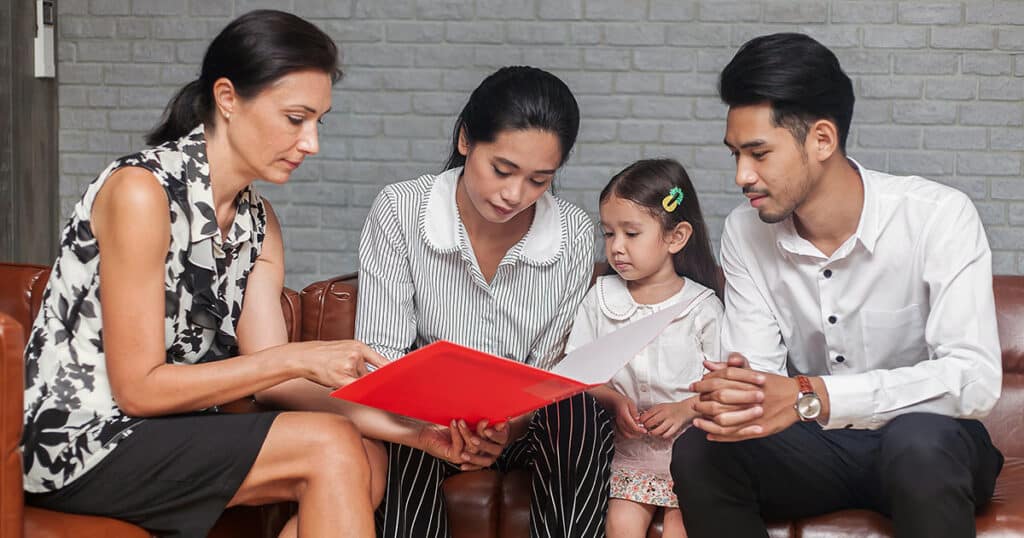
“Principles,” “Practice,” and “Learning Outcomes” are the three key elements of the Early Years Learning Framework (EYLF) in Australia.
Principles of the EYLF are the values and beliefs that underpin the framework and guide the work of early childhood educators. They include a commitment to children’s rights, respect for diversity, and a belief in the importance of relationships and partnerships.
Practices of the EYLF describe the ways in which early childhood professionals can create supportive and responsive environments that enable young children to learn and develop. These practices include providing opportunities for children to explore and discover, engaging in play-based learning, and building positive relationships with children.
Learning Outcomes of the EYLF describe the goals for children’s learning and development in the early years. They are organized into five areas: identity, community, well-being, learning and communication. These outcomes provide a clear vision of what children should know and be able to do by the time they transition to school.
5 Learning Outcomes
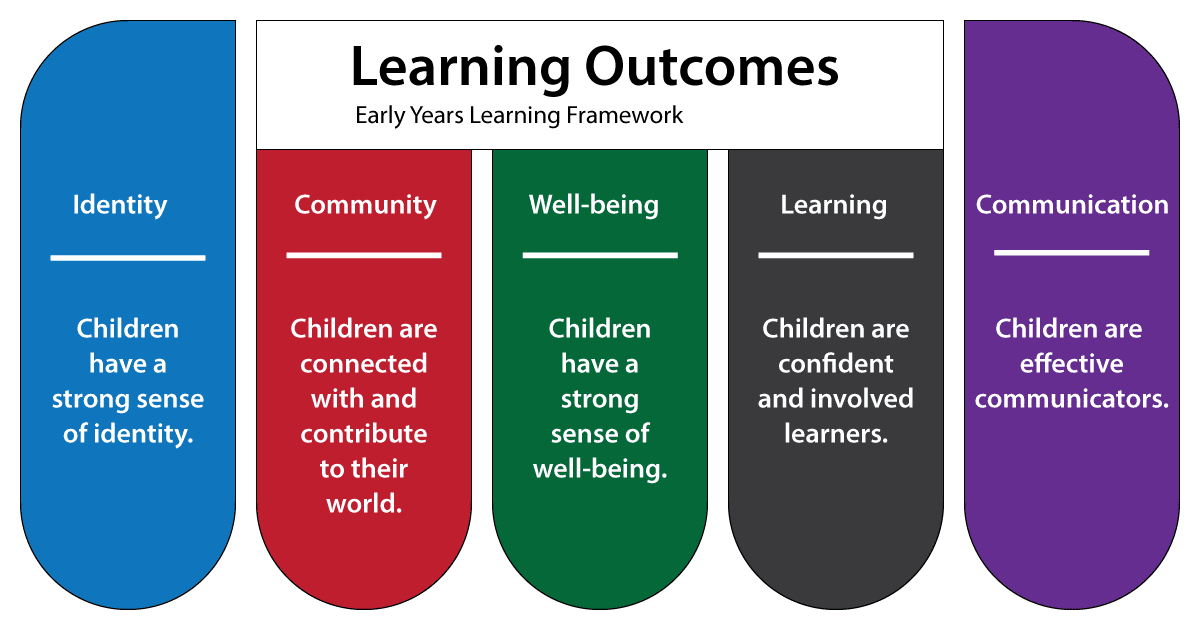
The Learning Outcomes of the Early Years Learning Framework (EYLF) describe the goals for learning and development in early childhood. There are five outcomes:
- Identity. Children have a strong sense of identity. They feel good about themselves and their unique abilities. Kids develop their own sense of purpose and belonging, and are able to express their feelings and ideas.
- Community. Children are connected with and contribute to their world. They develop relationships with others and make connections with their community, culture, and the natural environment. They learn about their rights and responsibilities as members of their community, and contribute to their world in meaningful ways.
- Well-being. Children have a strong sense of well-being. They have a sense of physical, emotional, social, and spiritual well-being. They feel safe, secure, and supported, and are able to manage their own emotions and behaviors.
- Learning. Children are confident and involved learners. They’re curious, interested in learning, and willing to try new things. Kids are able to take on challenges, persist in their efforts, and learn from their experiences.
- Communication. Children are effective communicators. They express themselves effectively in a range of contexts, using a variety of forms of communication. They listen to and understand others, and engage in respectful dialogue.
These outcomes describe what children should know and be able to do by the time they transition to school. They provide a clear vision of the knowledge, skills, and dispositions that young children should develop in the early years.
5 Principles of the Early Years Learning Framework
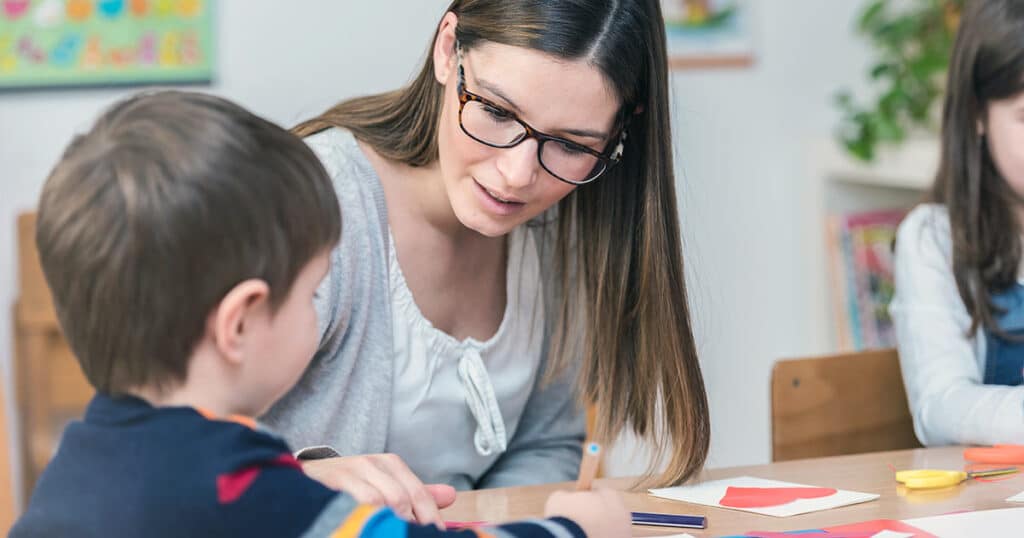
The five principles of the Early Years Learning Framework (EYLF) are the foundation of the EYLF and provide a clear vision for child learning and development. These principles are Belonging, Being, Becoming, Communication, and Thinking.
- Belonging: Children feel a sense of belonging when they are connected with and contribute to their world.
- Being: A child’s identity, knowledge, and understanding of the world is shaped through their experiences.
- Becoming: Kids are confident and involved learners who are constantly learning and developing.
- Communication: Children learn through listening, speaking, reading, and writing.
- Thinking: Children also learn through exploring, problem-solving, and creating.
The EYLF is based on the belief that children are competent and capable learners who should be active participants in their own learning and development. It emphasises the importance of supporting children’s sense of agency and empowerment, and fostering their curiosity, creativity, and critical thinking skills.
8 Practices of the EYLF for Educators
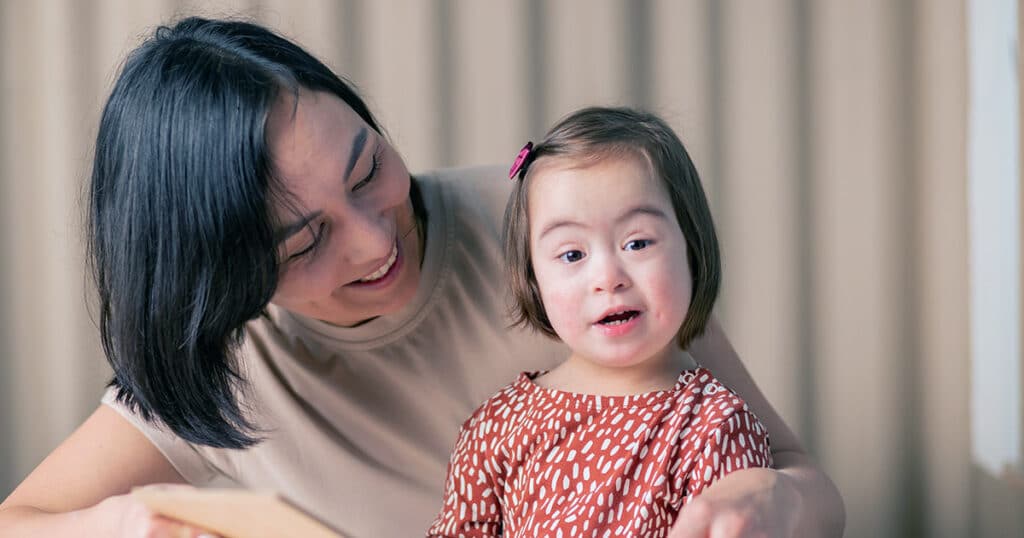
The Early Years Learning Framework (EYLF) outlines eight practices to support ongoing learning and development. Early childhood educators should:
- Build relationships: Build positive and respectful relationships with children, families, and communities, and create a sense of belonging and inclusion.
- Provide a safe and supportive environment: Create a safe, supportive, and nurturing environment that promotes child wellbeing and development.
- Promote children’s agency: Support children’s sense of agency and empowerment, and encourage them to make decisions and take control of their learning.
- Encourage intentional teaching: Use intentional teaching strategies that are purposeful, deliberate, and responsive to children’s interests and needs, including assessing and monitoring children’s learning.
- Support children’s learning through play: Support children learning through play-based activities that encourage exploration, experimentation, and problem-solving.
- Facilitate learning through interactions: Facilitate learning through rich and meaningful interactions with kids, and support communication, language, and literacy development.
- Respond to children’s diverse needs: Be responsive to children’s diverse needs and support their individual learning styles and pace of development.
- Reflect on and evaluate practice: Reflect on and evaluate their practice, and seek feedback from colleagues and families to continually improve teaching and learning approaches.
The EYLF encourages early childhood professionals to adopt these practices in their work, and to create learning environments that are inclusive, respectful, and responsive to children’s diversity. It also encourages educators to be reflective and to seek feedback from colleagues and families in order to continually improve their practice.
As defined within the framework, early childhood pedagogy refers to “an early childhood educators’ professional practice, especially those aspects that involve building and nurturing relationships, curriculum decision-making, teaching and learning.” For an early childhood professional, EYLF practices should form part of your pedagogy.
7 Areas of Learning of the EYFS
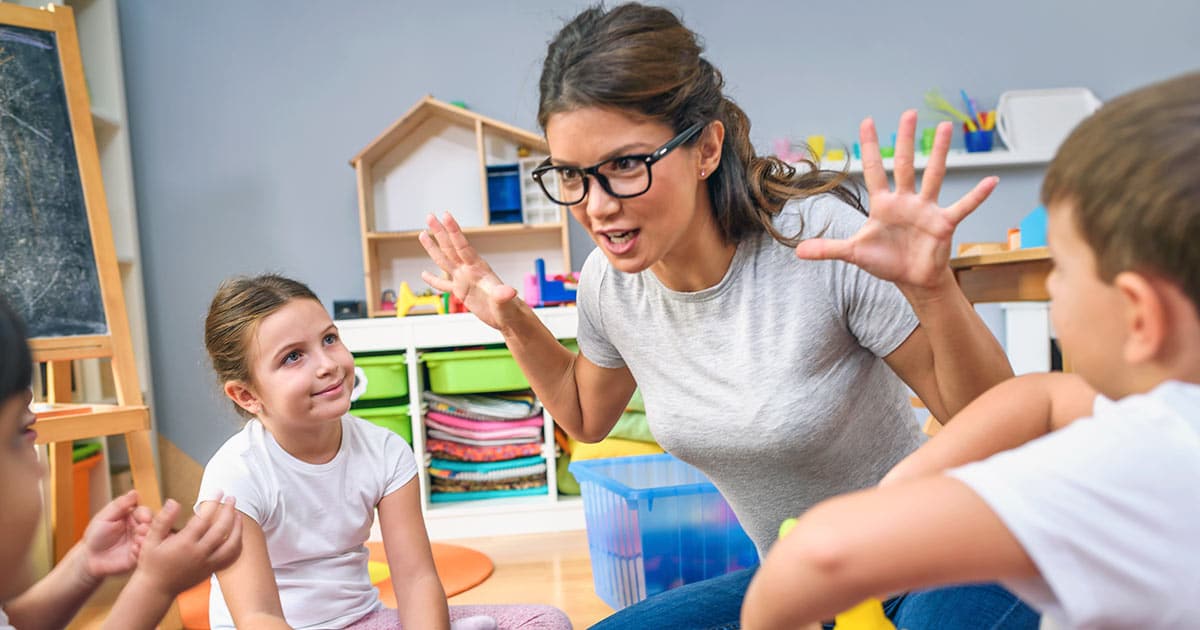
Australian educators may find the United Kingdom’s Early Years Foundation Stage (EYFS) useful. Like Australia’s EYLF, the EYFS is designed to support children’s learning and development from birth to 5 years of age.
There are seven areas of early learning, consisting of three prime and four specific areas. They are:
- Personal, social and emotional development (prime)
- Physical development (prime)
- Communication and language (prime)
- Literacy (specific)
- Mathematics (specific)
- Understanding the world (specific)
- Expressive arts and design (specific)
The prime areas are considered particularly important for young children’s development and are given a higher level of emphasis within the EYFS. The specific areas build on and support the development of the prime ones.
The UK Government emphasises: “Your child will mostly be taught through games and play.” The framework applies to schools and early years providers in England only, with Scotland and Wales having their own frameworks.

Play-based learning is key to this working. There’s only so much instruction you can provide to children under five.